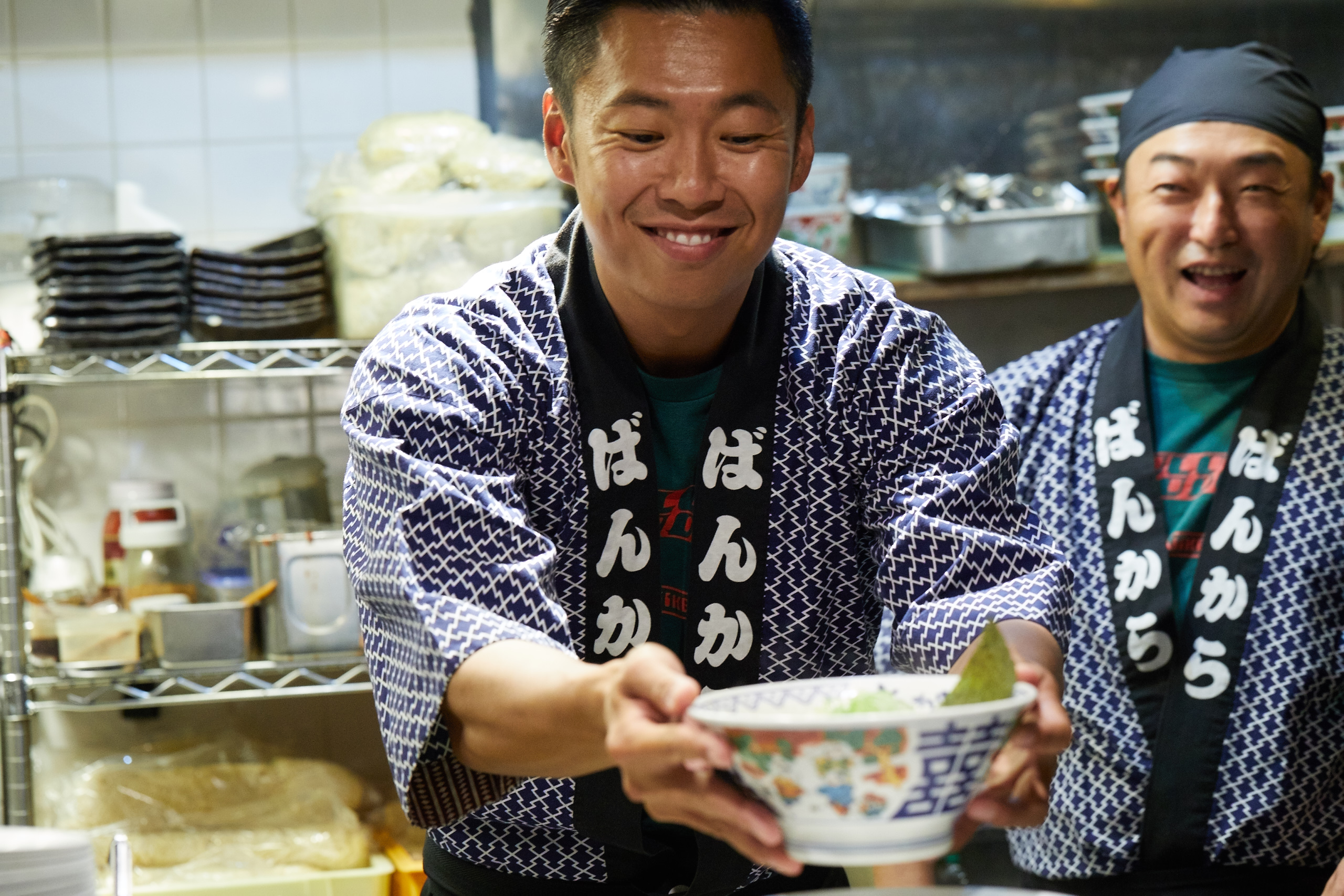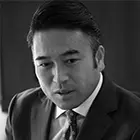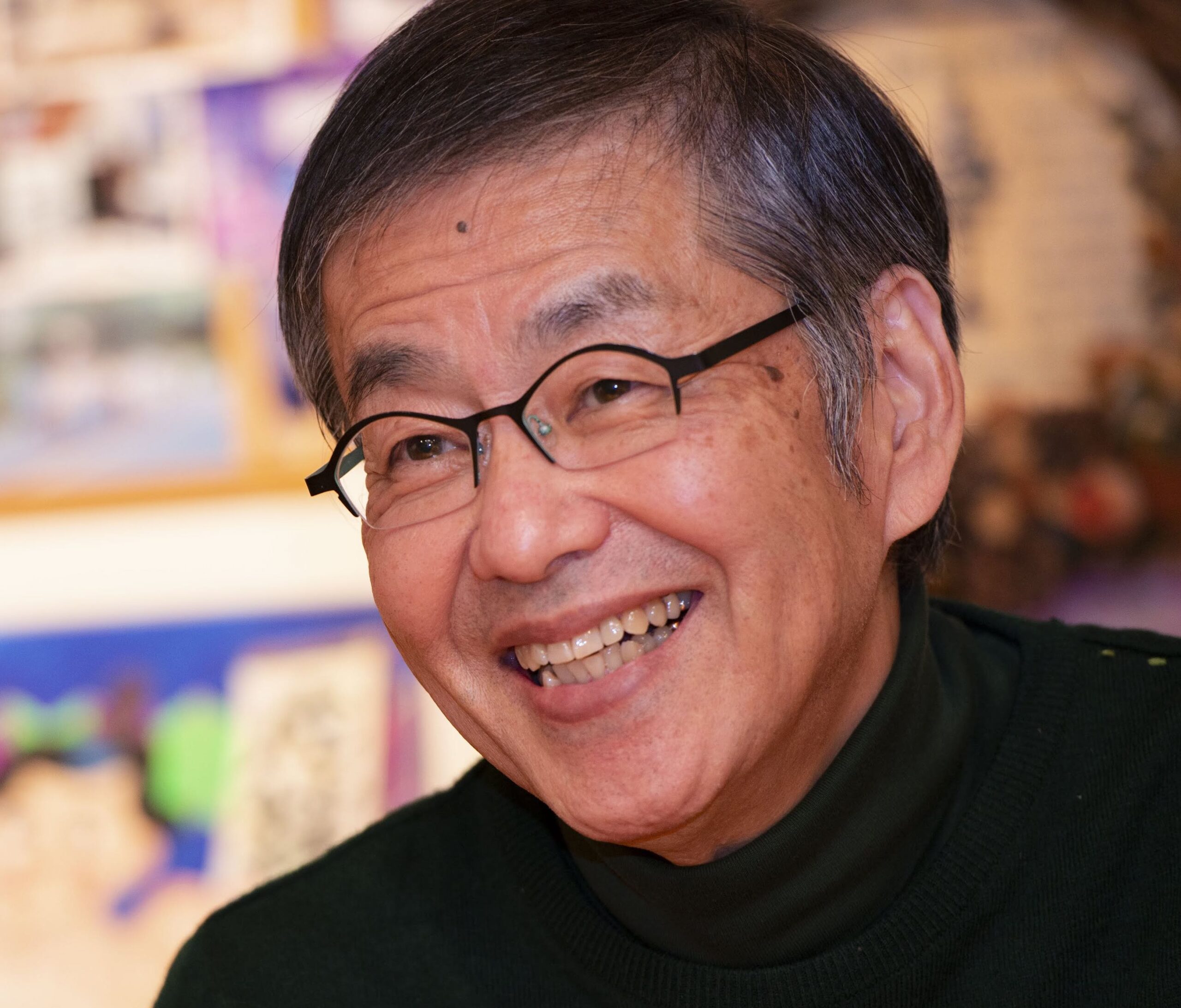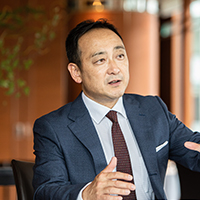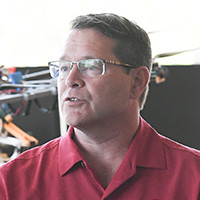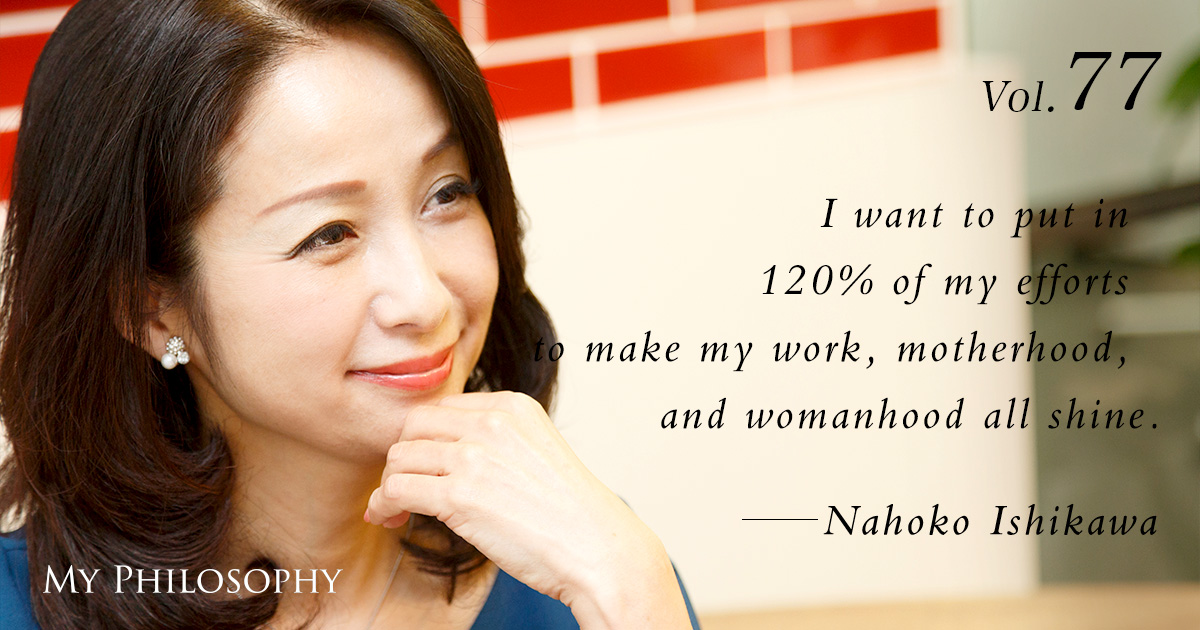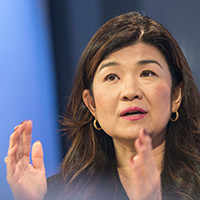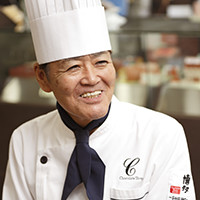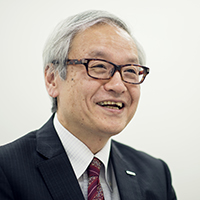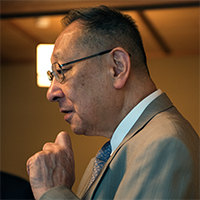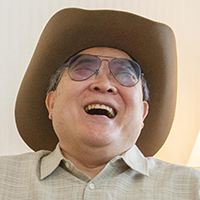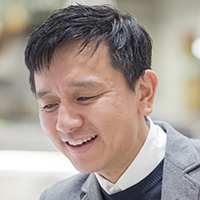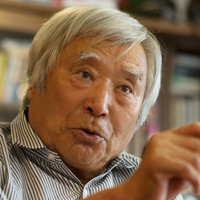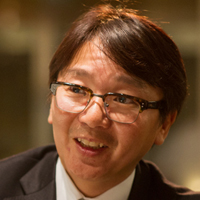
At 27, Naoki Kusano found himself ¥5 billion in debt after the bankruptcy of his father’s ramen business. We sat down to find out how that experience led him to invent his “Ramen Franchise System” in an attempt to transform an entire industry.
Profile
Vol.83 Naoki Kusano
President, HANAKEN | TOKYO TONKOTSU RA-MEN BANKARA Founder
Born 1969 in Tokyo. Kusano graduated from the School of Humanities and Culture at Tokai University. His father, Mitsuo, founded the popular Kurumaya Ramen chain. Upon graduation, Kusano worked for two years in the food industry in Fukuoka before joining his father's company, Sakae Shoji, where he served as director of their Nagoya branch. Kusano became president of Sakae Shoji in 1997. In May of that year, the company filed for bankruptcy under the Corporate Reorganization Act. In 1998, he opened Bankara Ramen in Ikebukuro, which quickly became known for its signature tonkotsu broth and kakuni pork belly. In June 2008, the company opened their first international location in Thailand. His other chains include Hormone Hanaken and Bar Houzan. As of June 2018, his company has a total of 45 restaurants worldwide, which include 11 company-operated and 27 franchise locations across Japan as well as 7 international locations.
Franchise system that supports from scratch

I have a true passion for ramen. I want to make delicious ramen that puts a smile on people’s faces, and I don’t want people who started ramen shops to fail. That’s what led me to develop our “Ramen Franchise System”.
We support the owner with the shop interior and equipment as much as necessary and prepare ingredients such as utensils, soups, and noodles. Furthermore, it provides all the know-how from sales forecasting, accounting system, and staff training, so that even inexperienced people can open ramen shops.
With this system, you can hit the ground running with a good location, fresh ingredients, and our tried and true recipes. There’s nothing to prep, and with a solid operational foundation in place, owners can devote their time to management. When you start from scratch, you have to think about your broth and the ingredients and equipment you’ll need to make it. But then you also have to think about suppliers, advertising, your employees and their training, management, and salaries. A lot of stores close down because they don’t have proper management. That’s why I devised this all-in-one “Ramen Franchise System” that lets you start with minimal upfront costs. I want to help train managers who can run stores that will turn a profit. And since profit is entirely determined by location, I hope that people will use my system, because I know that finding a good location can be difficult, especially for those starting their first business.
I’ve had my own share of failures, forced into bankruptcy and unable to do business under my own name. Now twenty years have passed since starting Bankara, and that experience has taught me that success ultimately depends upon how you build your business.
Kurumaya Ramen & A Father’s Legacy
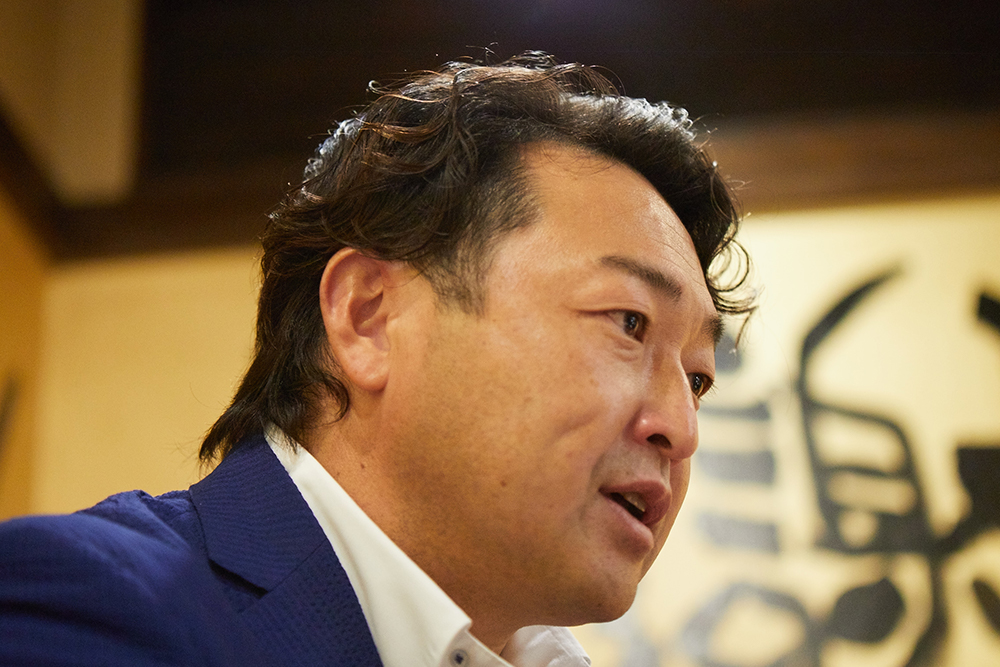
Earlier I said that I have experience with bankruptcy. I was referring to bankrupting the ramen chain that my father built. My father was a truck driver during Japan’s postwar period of rapid economic growth, but after seeing the success of drive-ins selling soba and ramen, he thought a restaurant would be more profitable. He left his job as a truck driver to join a franchise of udon and soba restaurants and was given a location under the train tracks of Ayase Station in Adachi, Tokyo. After running that store for a year or so, he struck out on his own to cash in on the ramen craze. Forseeing the popularity of Sapporo-style ramen, my father learned a family recipe that combined Hokkaido miso with just the right of garlic and soy sauce and opened his first miso ramen shop.
His first shop was actually a converted bus with a sign outside, parked in a vacant lot near the busy intersection of the Nikko Highway and Loop Road No. 7, also known as Kannana Dori. Because he was selling ramen out of a bus, customers started calling it kuruma-ya (lit. “car shop” in Japanese), which became the name of the chain. Before we knew it, there were enough people lining up outside that it attracted the attention of the newspapers.
Knowing that ramen would sell, my father built a noodle factory, set up miso production in my grandfather’s house, and started a franchise through his network of truck driver friends. Within five years, he’d expanded to 150 stores. We moved from an old duplex to a big house with enough land for a garden and pond. But my father was quite frugal, having grown up poor and only gone to school through junior high. Even though I was given a good education, my father told me that if I wanted money I had to make it myself, so I did quite a few different part-time jobs growing up.
Things Start to Fall Apart

When I was in junior high, my father’s younger brother, who ran 40 Kurumaya Ramen stores in the Chiba area, left the franchise and renamed all of his stores Ramen Tonta. My grandfather had taught both my father and my uncle the same family miso recipe, so for a while my uncle’s store had the same broth as Kurumaya. Just when it seemed like we had the upper hand with a new and improved soup, another executive left to start their own ramen shop, and ten years later the same thing happened again. My father gave up on developing the franchise, and over the next two years, he opened 200 locations that the company managed directly. This time we couldn’t keep up with operations, and I think that’s when Kurumaya started to take a turn for the worse.
That’s 200 stores in two years. We borrowed over ?4 billion from the Long-Term Credit Bank of Japan (LTCB), a major player in Japan’s postwar economy and our primary bank. No one thought that LTCB could ever go bankrupt. One day an auditor suddenly showed up and closed our accounts, saying that they couldn’t lend us any more money. I was instructed to replace my father as president if we wanted to receive any further financial support. This was actually a way to implicate me as well, making it impossible for the company to survive. I received a court order that essentially froze my assets, and the company went bankrupt. At 27, I was ?5 billion in debt and knew my life, as I knew it, was over.
Destined for Ramen

During corporate reorganization, I was ordered by the courts to fully cooperate and fulfill my obligations to the company, leaving me unable to declare personal bankruptcy. Even if I could have, the whole process would have cost ?4 million, which I didn’t have. I was at a loss─I couldn’t start a new business or look for another job either. A cash business was my only recourse, so naturally I thought about doing ramen again. But I was worried that people would criticize me for starting another ramen business when my first one had just failed. What’s more, the banks told me that I could be charged with crimes of aggravated breach of trust if I, as an executive of a company going through reorganization, used or disposed of any existing assets. That was really the nail in the coffin. But I knew how to run a ramen shop, and I wanted to assist people just starting shops of their own, so I began working as a wholesaler. My first job was producing a store for an acquaintance of mine. I procured the noodles, broth, and kelp stock used to make ramen and came up with some original recipes. This was the beginning of what would become the basis for Bankara’s distinctive flavor and marketing strategies.
As soon as the cash started flowing, I knew that I was destined to use my ramen know-how. But I knew I couldn’t do ramen the old way. And it took a lot of contemplation for my current business to take shape. I knew I wanted to make our kakuni pork belly famous across the country, so I started offering it free of charge after midnight to all paying customers. People loved the deal, and it turned a lot of new customers into regulars. Without that kind of special treatment, people won’t go out of their way, especially when they can grab a bite right next door at the convenience store.
Irrational Confidence

For five years, I lived with 5 billion yen in debt. Even with that enormous weight, I always had this irrational confidence that I could succeed in the ramen business again. I figure you don’t need a reason to be confident. Some people say that confidence comes from success, but in my experience, you have to be confident before you start in order to succeed. So much happens in life─if you get sick, you try as hard as you can to find a good doctor. There’s no time for fretting over past mistakes when you’re in a pinch. When Bankara first opened, I’d be in the kitchen every night braising bamboo shoots while telling myself that I’d open 50 stores in the next year. That’s why I had the words “Bankara Honten” (lit. “Bankara No. 1 Store”) printed on our food tickets, despite having no other locations at the time.
I expanded to 16 stores in four years and have opened a total of 45 to date. Now it’s time to move onto the next stage of my career. I’m determined to use my years of experience and know-how to make the “Ramen Franchise System” business model a success and transform ramen into an industry that people can be proud of.

I’d already mentioned most of what we talked about during this interview to Sugiyama at some point, either on our way to go surfing or over drinks at my barbecue joint. There’s this loose air about him that makes you comfortable sharing things that you wouldn’t dare tell others. Though he usually spends half the time talking about his own stories. [laughs] He has the ability to uplift and encourage and I hope he can continue to be an example for younger generations, even if he isn’t as young as he used to be. [laughs]
Naoki Kusano President, Hanaken Co

27 years old and 5 billion yen in debt. It’s an incredible experience, and I know I would have panicked if I found myself in the same situation. I truly admire his courage. I believe that his experience overcoming adversity has given him the positive attitude and optimism that he has today. After the interview, I finally had the chance to enjoy a bowl of Kusano’s ramen, which he made especially for me. He said he hadn’t been in the kitchen for a while, but by the look on his face I could tell how much ramen means to him. He even let me borrow a Bankara happi coat and take a photo to commemorate the occasion.
This interview made me realize just how committed Kusano is to his innovative “Ramen Franchise System” and to the concept of never letting another ramen shop go out of business. His positivity and optimism is bound to take him and his ramen around the world.
Daisuke Sugiyama Editor-in-Chief, My Philosophy
This interview took place at Bankara Ramen, Shinjuku-Kabukicho, in May 2018. Text by Naomi Kusuda. Photography by Yuko Konagai. Translation by Queen & Co.







